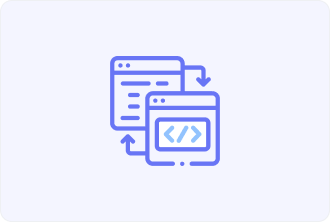Code Refactoring Definition

The process of restructuring code without affecting the exterior or the visibility of the code, as well as without introducing additional codes is known as code refactoring. It is a method that may seem like tidying a room without getting rid of anything. The specific hypothesis here is that by applying structures into the construct of one’s reality, all things will be easier to locate and to access even if all that is being done is a mere changing of appearances.
This is typically made by a combination of numerous small and fairly precise code base modifications to steer clear of creating new concerns. In other words, refactoring allows one to effortlessly improve the outward appearance of simple rather the functional aspects improves the rate of progress towards the development goal and reduces the chance of errors. Optimizing from the previous code makes the created code better which is known as refactoring.
Refactoring can at one time offer the improvement of the source code and then systematically apply all these changes time after time to all the subsequent calls in the program. The idea that is described here is that whenever a vast number of grainy modifications are introduced into a segment of code with the aim of affecting its behavior, then of course, something will emerge at the end. These modifications do not generate new features and new functionalities of the software but preserve the previous performance.
The importance of code refactoring
Agile software development methodology used in construction of an application is a way that is viewed as a system by several groups; when involved in coding, a lot of programmers have control over it. Such a code should be written that any member of the team can easily understand it in order to add more features or enhance the existing ability; this can only be done when the code is very much intelligible, lucid, and uncomplicated.
Clean code. Refactoring gives a fresh look to the code eliminating all code smell and making it more readable and intelligible. Eliminated are duplicated code, unused variables, excessive number of parameters, and functions, large, classes, numerous conditions, and unnecessary loops. They are debugged and the flaws that were present in the coding language or architecture are done away with before they reach a level where they form a risky vulnerability.
Enhanced performance. An application that does not contain garbage classes, functions, variables, methods or any form of junk in it at all takes lesser time and provides a much smoother operation. In case, the code of an application is recently refreshed or updated then the performance of an application rises. Application produces fast responses and users are no longer able to bring up the issue of the slow performances.
Saving time and money. Due to good organization of the code in a clean and clear manner the implementation of new features are easy to incorporate. No single developer would like to work or pass time by trying to decipher some shoddy code. Application that needs to be refactored take more time to extend or upgrade than an application that has been refactored.